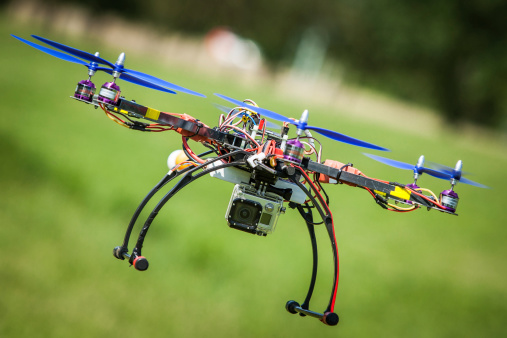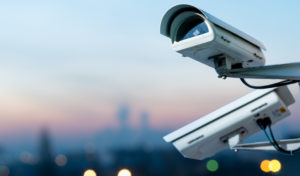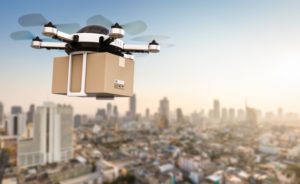
The FAA proposes rule permitting restricted use of commercial unmanned aircraft systems.
Until recently, commercial drones filling the airspace seemed but a futuristic dream. But they may well be commonplace in American skies within two years, according to a recent announcement by the federal aviation regulator.
Today, the Federal Aviation Administration (FAA) severely restricts commercial use of unmanned aircraft systems, more commonly known as drones. The FAA must grant express, individual permission to drone operators prior to a drone’s use. This restriction has prevented the wide-scale implementation of drones for business purposes, particularly because the FAA has granted only seven percent of the applications for individual approval.
Earlier this month, the FAA issued a notice of proposed rulemaking that would allow the operation of commercial drones without obtaining individual permission. The proposed rule would extend to all drones weighing less than 55 pounds.
If adopted, the proposed rule would place some significant limitations on drone use, requiring that they operate at less than 100 mph and 500 feet above the ground. Only Transportation Security Administration vetted operators who pass an FAA approved exam and are over the age of 17 would be allowed to operate drones. Drones would not be permitted to fly “over any person not directly participating in the operation.” Also, the proposed rule would task small drone operators with avoiding all other aircraft operating in the same airspace.
The most severe restriction in the proposed rule would require drones to remain in the unaided visual sight of the operator at all times. While the operator could work with a visual observer to monitor a drone better, “an operator would always be required to have the capability for visual line of sight.” The FAA states that it looked into other solutions to ensure drones avoid other aircraft but found no existing technology that could be implemented on small drones sufficiently reliable. The unaided visual sight requirement would also restrict operations to daylight hours on days with at least three miles of visibility.
The line-of-sight requirement strikes a blow to many businesses hoping to use drones for cheaper, faster deliveries. For example, the proposed rule would not permit Amazon to implement its wished-for “Prime Air” program to deliver packages in less than thirty minutes because such a program would require some form of remote piloting out of the operator’s direct line of sight.
On the other hand, some aspects of the proposed rule are less stringent. For example, the proposed rule does not mandate that drones obtain an airworthiness certificate, an extensive process required of airplanes. In order to promote accountability, drones must instead prominently display an identifying number.
Overall, the FAA hopes that its proposed rule will be effective and flexible. FAA Administrator Michael Huerta said, “[W]e want to maintain today’s outstanding level of aviation safety without placing an undue regulatory burden on an emerging industry.”
While the proposed rule marks a significant step towards allowing commercial drones to enter U.S. airspace, many in the drone industry are concerned about how slowly the FAA is moving. For example, the FAA will likely miss a September 2015 congressional deadline to issue a final rule.
Others have applauded the FAA for its methodical study of how best to incorporate drones into the airspace, particularly in light of the “magnitude of the safety implications.”
To further this research into the best mode of incorporating drones, the FAA partnered with six test site operators, ranging from the North Dakota Department of Commerce to Texas A&M Corpus Christi, at the end of 2013. These test sites focused research on the agency’s goals, including ensuring safe systems, researching issues related to ground control and command links, and developing reliable methods to avoid mid-air collisions. Under the proposed rule, these test sites would continue to operate for the next five years in order to gather additional information and test further integration.
Proponents of integrating drones into the regulatory framework for aircraft point out a variety of potential advantages of commercial drones. For example, the proposed rule itself suggests that, under its framework, businesses could employ drones for crop monitoring, antenna inspections, rescue operations, bridge inspections, and aerial photography, among other uses. Business Insider estimates that over $11 billion will be spent worldwide on commercial drones over the next decade.
Small, unmanned aircraft also pose less of a risk than manned aircraft, according to proponents of expanded drone use. In the event of an accident, a drone weighing less than 55 pounds is likely to cause significantly less damage than a manned aircraft. Additionally, drones can complete dangerous flights that might put a human operator at risk.
Those opposed to integrating drones into U.S. airspace typically point to significant safety concerns, particularly about mid-air collisions between a drone and another aircraft. Pilots reported a surge in near misses with drones in 2014. The proposed rule’s line-of-sight requirement and limits on flying height would presumably limit the risk of such collisions.
Drone opponents also frequently express concerns about the potential for privacy invasions, particularly if the government uses drones for surveillance. The proposed FAA rule does not address these privacy issues. However, President Barack Obama recently issued a Presidential Memorandum detailing the federal government’s plan to ensure “privacy, civil rights, and civil liberties” while promoting its use of drones. The memorandum states that the government will not use drones to violate the First Amendment or for any discriminatory purposes. Any personally identifiable information obtained by drones will be deleted after 180 days. Additionally, the memorandum commits agencies to transparency about their drone use.
The public comment period for the proposed rule will be open for 60 days. The FAA must take into account comments received in formulating its final rule, which the agency expects to release sometime next year.



